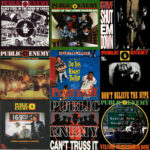For many, the call of the midnight movie is irresistible, and few films embody this allure quite like The Rocky Horror Picture Show. More than just a film, it’s a phenomenon, a participatory experience, and at its heart, a musical journey. The songs of The Rocky Horror Picture Show are not mere background music; they are anthems of liberation, invitations to transgression, and for generations, they have been nothing less than transformative. Just like the Sirens of myth, these songs beckon audiences to leave the ordinary behind and embrace something wilder, more authentic, and utterly unforgettable.
The Songs as a Gateway: More Than Just a Movie Soundtrack
The Rocky Horror Picture Show isn’t just watched; it’s experienced, and the songs are integral to this immersive ritual. From the opening chords of “Science Fiction Double Feature” to the rousing finale of “Time Warp,” each track is a carefully crafted invitation into the film’s bizarre and liberating world. For countless individuals, particularly those on the fringes of societal norms, these songs became a siren call, echoing in the dimly lit theaters and promising a space of belonging and self-discovery.
Consider “Sweet Transvestite,” Frank N. Furter’s flamboyant introduction. This isn’t just a song; it’s a declaration of identity, a defiant embrace of otherness. For audiences, especially in the late 70s and 80s when Rocky Horror gained its cult following, this song was a revelation. It challenged gender norms and celebrated the freedom to be different, to be “it,” whatever “it” may be. The line “Don’t dream it, be it,” from “Sweet Transvestite,” encapsulates this transformative message perfectly. It’s an active call to self-actualization, urging listeners to move beyond passive desires and embody their true selves.
 Frank N Furter Sweet Transvestite Rocky Horror Picture Show
Frank N Furter Sweet Transvestite Rocky Horror Picture Show
Then there’s “Time Warp,” perhaps the most iconic song from the film. It’s more than just a catchy dance tune; it’s an invitation to participate, to physically embody the film’s spirit. The simple steps and infectious rhythm break down barriers between audience and performance, creating a communal experience that transcends the typical movie-going event. “Time Warp” embodies the participatory nature of Rocky Horror, turning viewers into active participants in the story.
Songs like “Dammit Janet” and “Touch-a, Touch-a, Touch Me” explore themes of sexual awakening and desire with a playful, yet provocative, honesty. They reflect the film’s broader exploration of sexuality and challenge conventional notions of romance and relationships. Even the more melancholic numbers, such as “I’m Going Home,” resonate with a yearning for belonging and self-acceptance, themes deeply embedded within the Rocky Horror experience.
The Enduring Legacy: Why Rocky Horror Songs Still Resonate
The continued popularity of The Rocky Horror Picture Show and its songs speaks to their enduring power. These aren’t just songs tied to a specific era; they tap into universal desires for self-expression, acceptance, and liberation. For many, discovering Rocky Horror is a rite of passage, a moment of awakening to alternative ways of being. The songs serve as a soundtrack to this personal transformation, offering a vocabulary and a rhythm for exploring identity and challenging societal expectations.
Much like Odysseus, tempted by the Sirens’ song, audiences are drawn to the world created by Rocky Horror and its music. It’s a world that encourages questioning norms, embracing individuality, and finding community in shared experiences of joyful transgression. The songs provide a safe space to explore these themes, contained within the theatrical setting, yet resonating far beyond the walls of the movie theater.
The brilliance of Rocky Horror Picture Show songs lies in their ability to be both outrageous and relatable, campy and deeply meaningful. They invite us to question “who we are and what we are doing,” as the original article eloquently puts it. They encourage us to “sail off course” from the expected, to embrace the unexpected, and to find our own rhythm in the “agony and ecstasy” of self-discovery.
For anyone seeking a soundtrack to personal liberation and a celebration of individuality, the songs of The Rocky Horror Picture Show remain a powerful and irresistible call. So, put on the soundtrack, learn the “Time Warp,” and remember: “Don’t dream it, be it.”

